Renault’s Scenic pioneered the five-seat people-carrier concept, and has now reached its fourth generation with a swoopy new shape. Among its primary rivals is another French car, the third-generation C4 Picasso. It arrived in 2013 but underwent a major refresh last year.
So how do the two mid-sized MPVs measure up today?
Kerb appeal

Let’s start with the Scenic’s trump card: stylish good looks. There’s no denying that the new Renault cuts a dash with its sleek, space-age silhouette. The car looks particularly arresting in bright yellow body colour with contrasting black roof. The car’s rippling shoulder line and smoothly scultped bodywork giving the Scenic a muscular look.
Giant 20-inch alloy wheels add to the drama – interestingly smaller or larger wheelers aren’t actually available, though different styles of alloys are offered. They give the look of a motor-show concept but thankfully the tyres aren’t stupidly wide, in fact they’re pretty narrow, keeping fuel consumption in check. And because the car was designed with giant wheels in mind, they don’t clobber the ride. In France, you can even buy 20-inch steel wheels with plastic hubcaps.
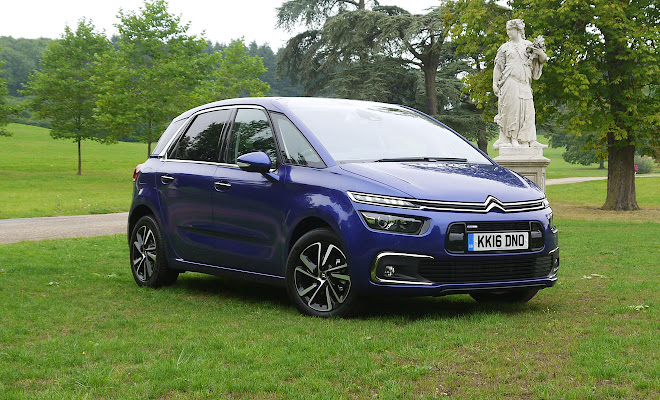
The C4 Picasso does inevitably seem a little frumpy in comparison. This is despite the mid-life facelift applied late last year that was designed to give it a more purposeful look at the front.
The egg-shaped Citroen is by no means a badly styled car but it looks tall, timid and boxy parked next to the racy Renault.
Winner: Renault Scenic
Interior accommodation

The Scenic remains a spacious car once you’ve climbed aboard – the big wheels can be deceptive when it comes to sizing up the car from the outside. However, while it still feels capacious the new car does seem to have lost some of the MPV mojo of previous generations.
The rear sets, for example, look as if they are three individual chairs but in reality there’s only a conventional 60:40 split.
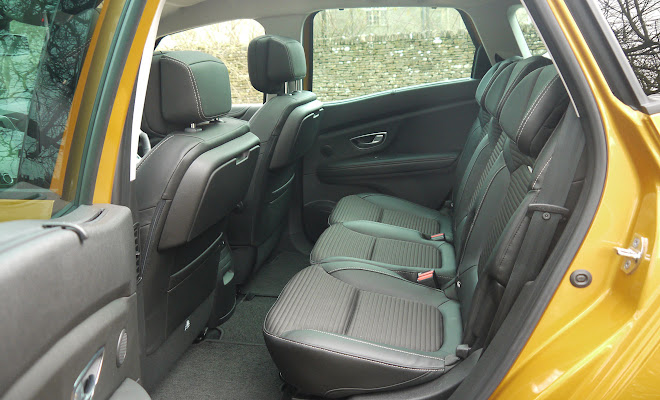
Happily, family friendly items like fold-down rear tray tables and integrated sunshades do remain part of the Scenic scene, and the option to quickly flop each part of the rear seat flat using buttons in the boot should also prove a boon.
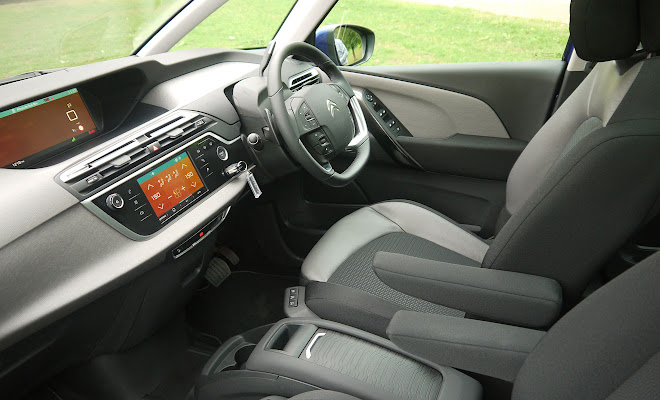
Up front, the Citroen feels the more spacious of the two cars, partly due to the lack of a bulky centre console.
Folding the Picasso’s rear seats is a manual affair, though Citroen does still provide three separate fold-and-slide chairs, making it much easier to trade space between luggage and people. Parents with more than the average number of small kids may also welcome the Picasso’s set of three Isofix anchor points in the rear, where the Scenic provides only two.
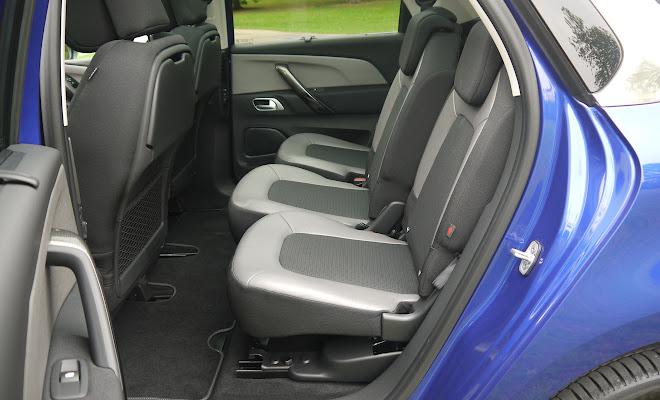
The Scenic’s swoopy bodywork also means relatively shallow glass in the rear windows, which may make shorter passengers more likely to suffer from travel sickness. By contrast the C4 Picasso is airy and light in the back.
Winner: Citroen C4 Picasso
Eco appeal
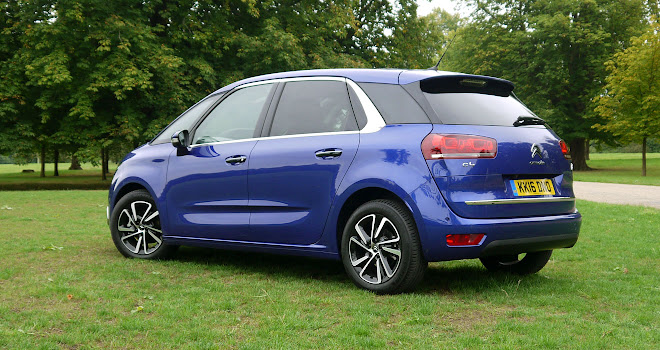
Citroen offers a good spread of petrol and diesel options for the C4 Picasso, all of which come with fuel-saving stop-start capability. The most economical option on paper is the BlueHDi 100 diesel with its 99g/km CO2 score, but it may struggle a little when the car is fully loaded with parents, kids, dog and luggage. Paying a bit extra for the more powerful BlueHDi 120, which also comes with six rather than five gears and hits an impressive 100g/km, would probably be wise.
Buyers concerned about the health impact of diesel emissions will be pleased to note that Citroen’s petrol options aren’t too shabby either. A PureTech 130 is rated at only 116g/km – not bad at all for car of this size. Renault’s TCe 130 petrol engine, by contrast, is rated at a much less impressive 129g/km.

The ace up Renault’s sleeve, however, is a Hybrid Assist version of its dCi 110 diesel-powered Scenic that will be available from this summer. It’s not a plug-in, but uses simple mild-hybrid technology developed by component supplier Continental, employing a relatively small 500Wh 48-volt lithium-ion battery mounted at the rear, linked to a 6kW electric motor-generator attached to the engine via a belt drive.
The motor-generator and battery can store energy during braking and redeploy it during acceleration, adding up to 15kW (20bhp) and up to 150Nm to the engine for short bursts.
The result is a 92g/km CO2 score that should be combined with a lively boost to acceleration – the hybrid version’s exact performance figures remain to be confirmed.
Winner: Currently Citroen, but the Hybrid Assist Scenic will reverse the order
Behind the wheel

Despite the Renault’s more athletic looks it’s not especially sporty to drive. You sit high behind a yard of plastic dashboard (decorated, in the version I tried, with some dubious stitching that tried and failed to make the plastic look like leather).
The front seats are comfortable and the Scenic is relaxing and easy to drive.
Split windscreen pillars are admirably slim in both the Renault and Citroen, helping visibility, though of course since windscreen wipers don’t go around corners vision in the rain can be compromised in either car. You notice this most on the approach to roundabouts.

The Scenic I tested included a useful head-up display, projecting data onto a small plastic screen that rises from behind a protective cover when you start the car. The angles involved mean the information shown hovers over the windscreen wipers rather than the road ahead, however.
The Scenic isn’t a particular restful place – I felt that more wind noise, tyre roar and engine noise made its way into the cabin than in the C4 Picasso.

The Citroen feels more like a van than a car when you first climb aboard, due to the relative positions of dashboard, windows and seats. However on the move the C4 Picasso feels perfectly poised and controllable, and a lot more refined than any van-based MPV.
While the Scenic offers a 7 or 8.7-inch touchscreen in portrait orientation, the Citroen provides a landscape-format 7-inch touchscreen as well as, from mid-range models up, a 12-inch digital instrument panel mounted in the centre of the dashboard.
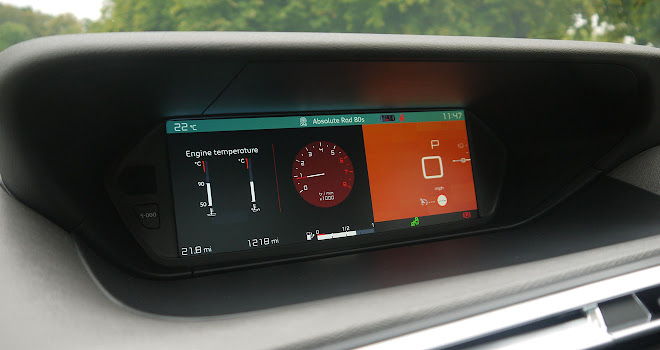
The Scenic’s control set-up is preferable in my book, if only because it leaves the heating temperature controls in hardware rather than on-screen.
Winner: Renault Scenic
Costs and benefits
List prices for the C4 Picasso begin at £20,175, while the new Scenic starts at £21,605. However, entry prices are often misleading. Attempting to compare apples with apples is tricky due to differences in engine power outputs and equipment, but squinting hard at the spec sheets suggests that choosing a C4 Picasso might save about £500 over a similarly equipped Scenic.
Costs for common options like metallic paint are similar, though if you want the Scenic’s contrasting roof it will cost about £400 extra to add to mid-range models. Leather upholstery can be chosen for higher-spec models of both cars, and is about £500 cheaper to add to the Renault than the Citroen.
Active emergency braking to avoid low-speed collisions comes as standard in the Renault, but it requires the purchase of a £900 option pack to add this valuable safeguard to the Citroen.
Winner: Renault Scenic
On balance
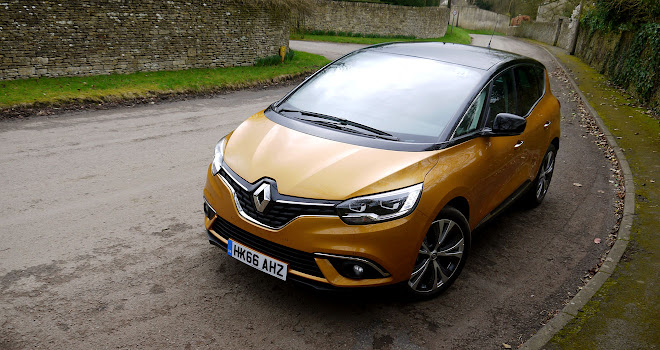
Renault’s Scenic manages to edge a little ahead of its French rival in most respects – as you’d expect of a brand new car going up against a model in the middle of its lifecycle. However, the one area in which the Citroen excels by a mile is, arguably, the most important in an MPV. If you’re after a car with the traditional people-carrier virtue of an airy, versatile, family-friendly cabin then the C4 Picasso is, in my opinion, still the better bet.
That caveat aside, the fourth generation Scenic emerges as a worthy winner. It looks great, drives as well as any MPV, and still manages to cram a spacious, well equipped cabin into a usefully compact package.




